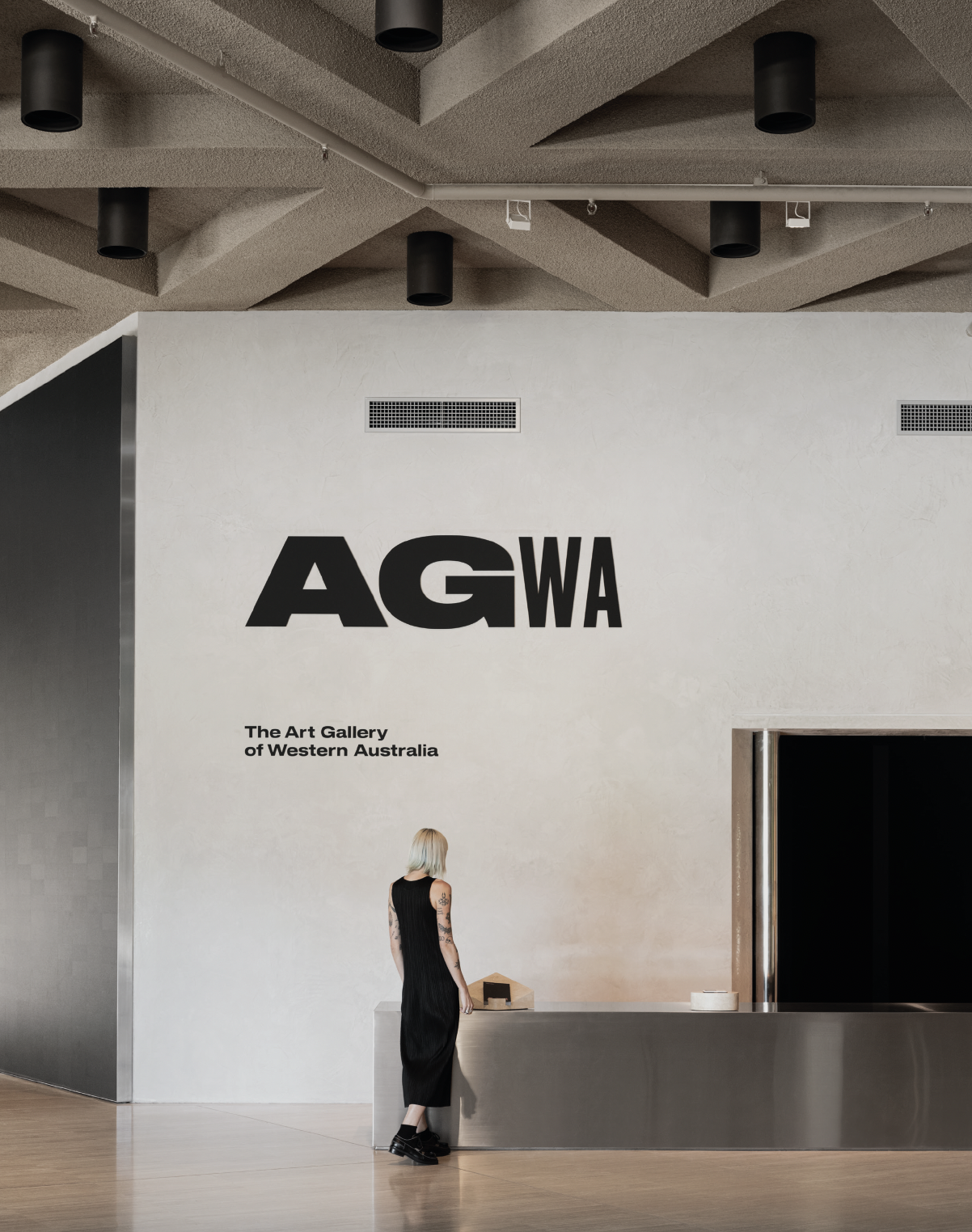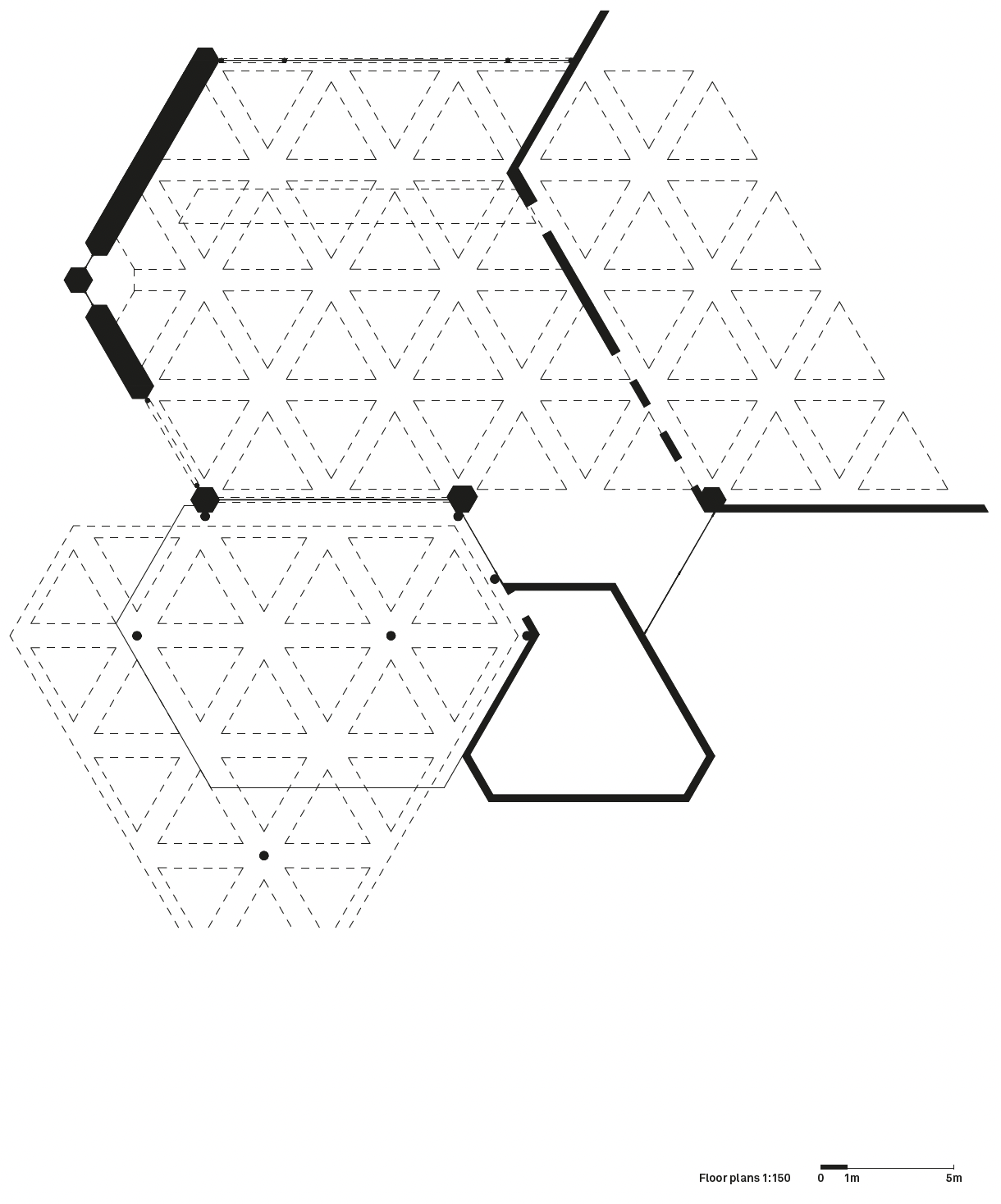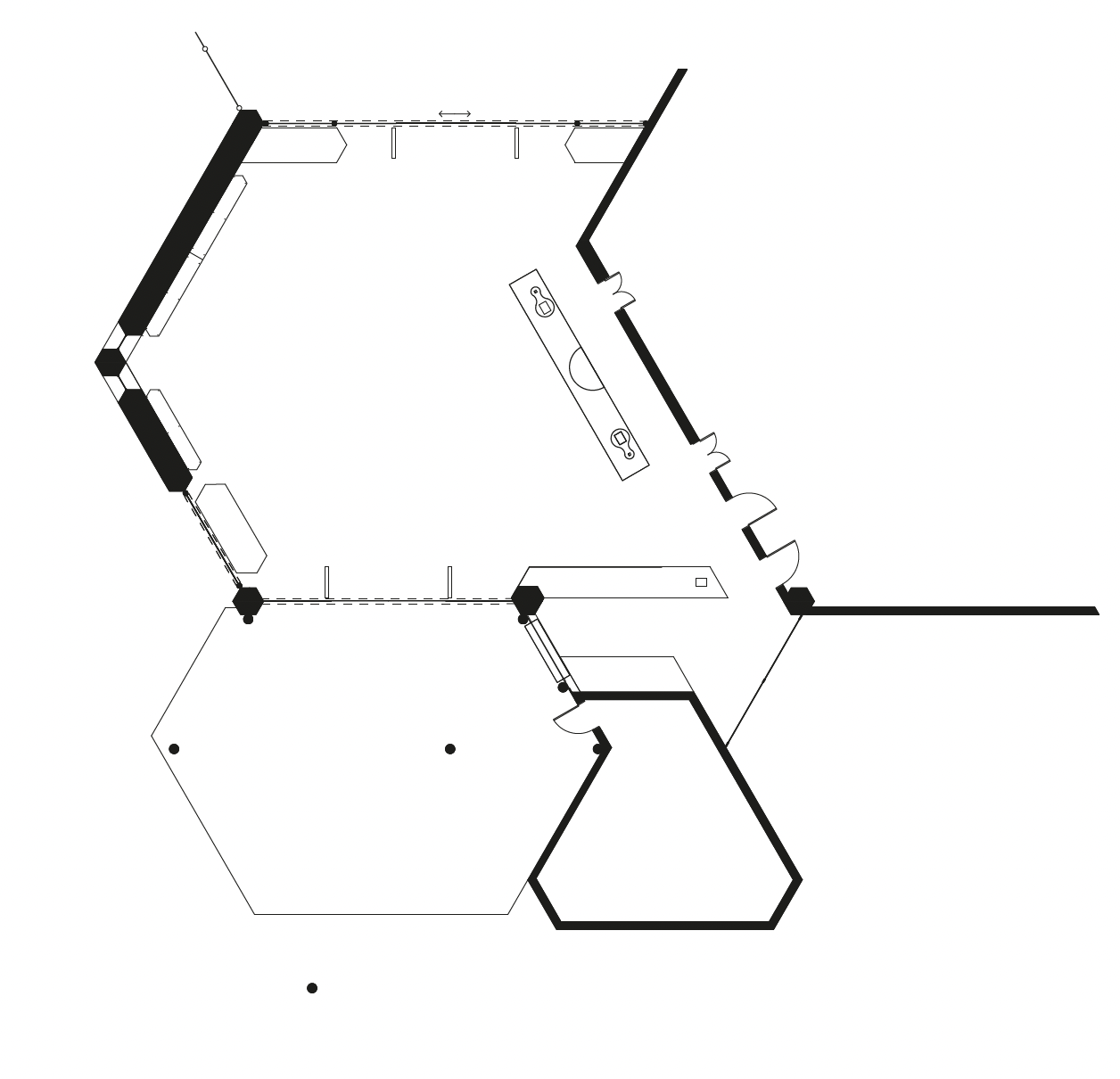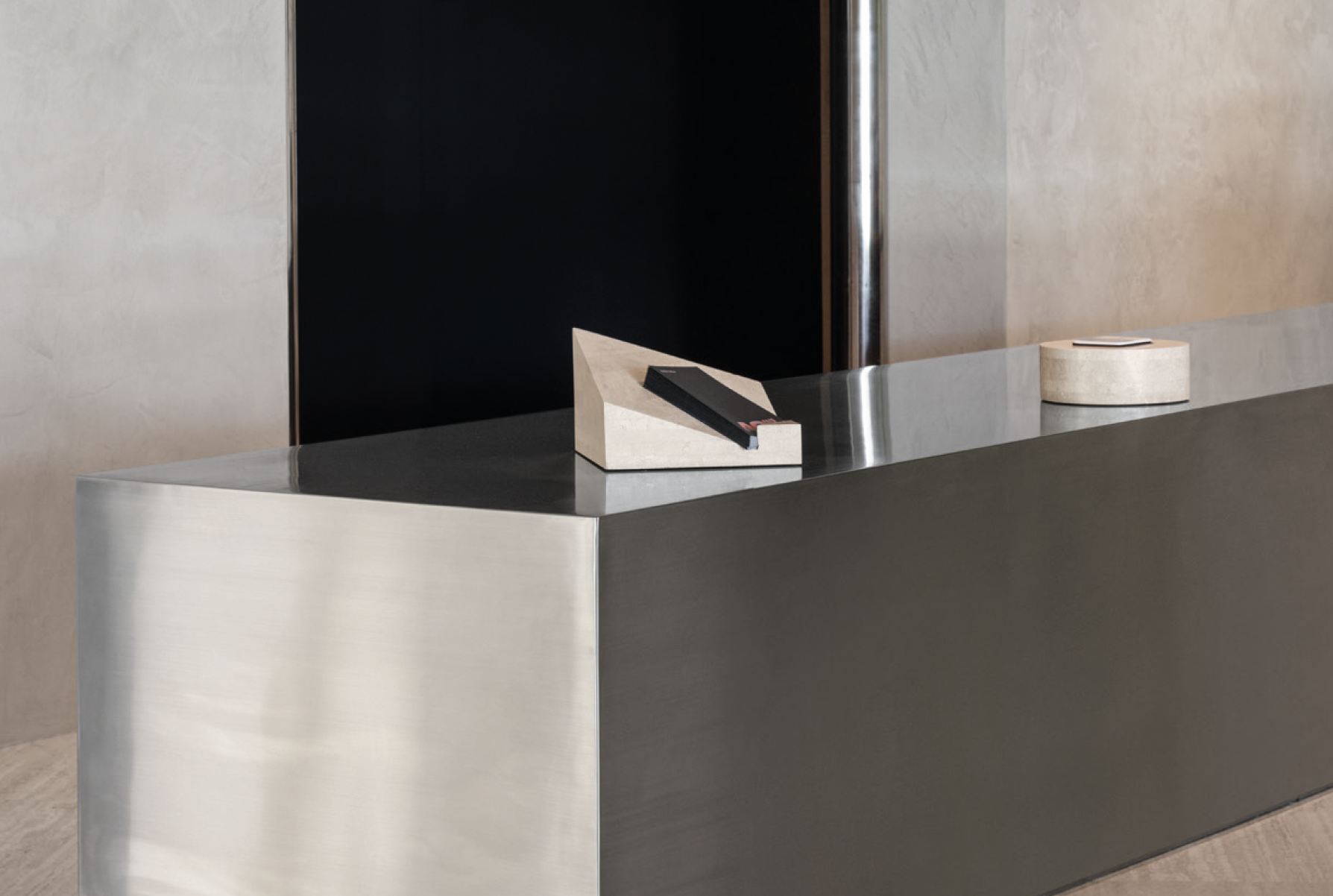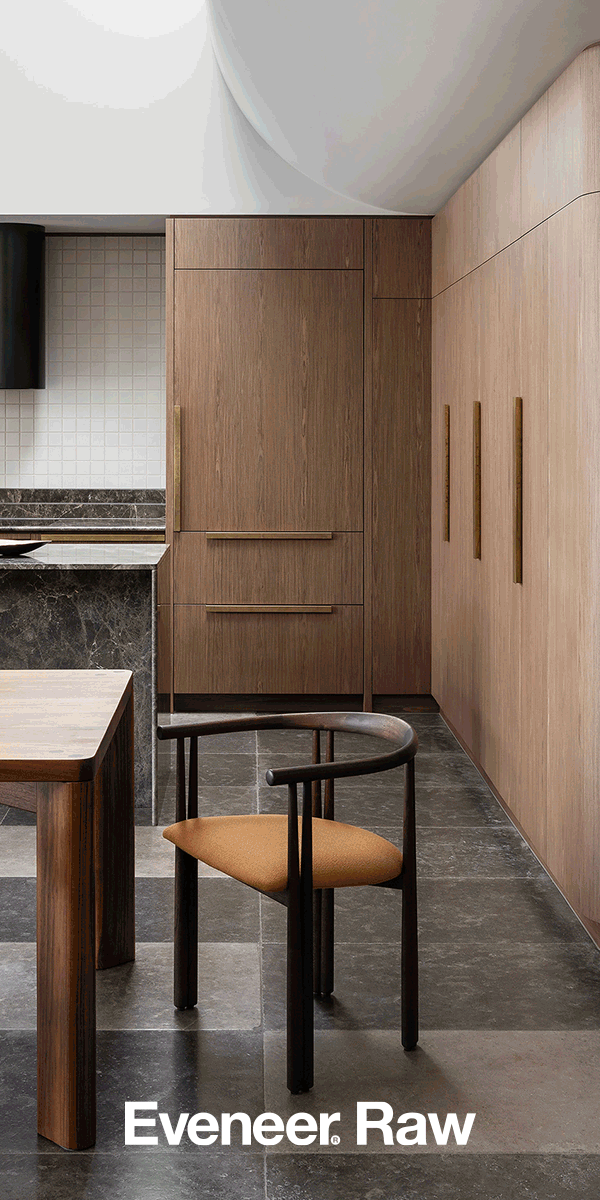Challenging the perception of Australia as a uniform, static landmass, Time Shouts, the 2021 winner of the Australian Tapestry Workshop's...
Nic Brudson for AGWA
With an opportunity to restore the entrance of the Art Gallery of Western Australia to its original Brutalist roots, Nic Brunsdon offers this iconic civic building a renewed sense of purpose in a time when confident leadership from our cultural institutions is more important than ever.
Essay
Emma Pegrum
Photography
Ben Hosking
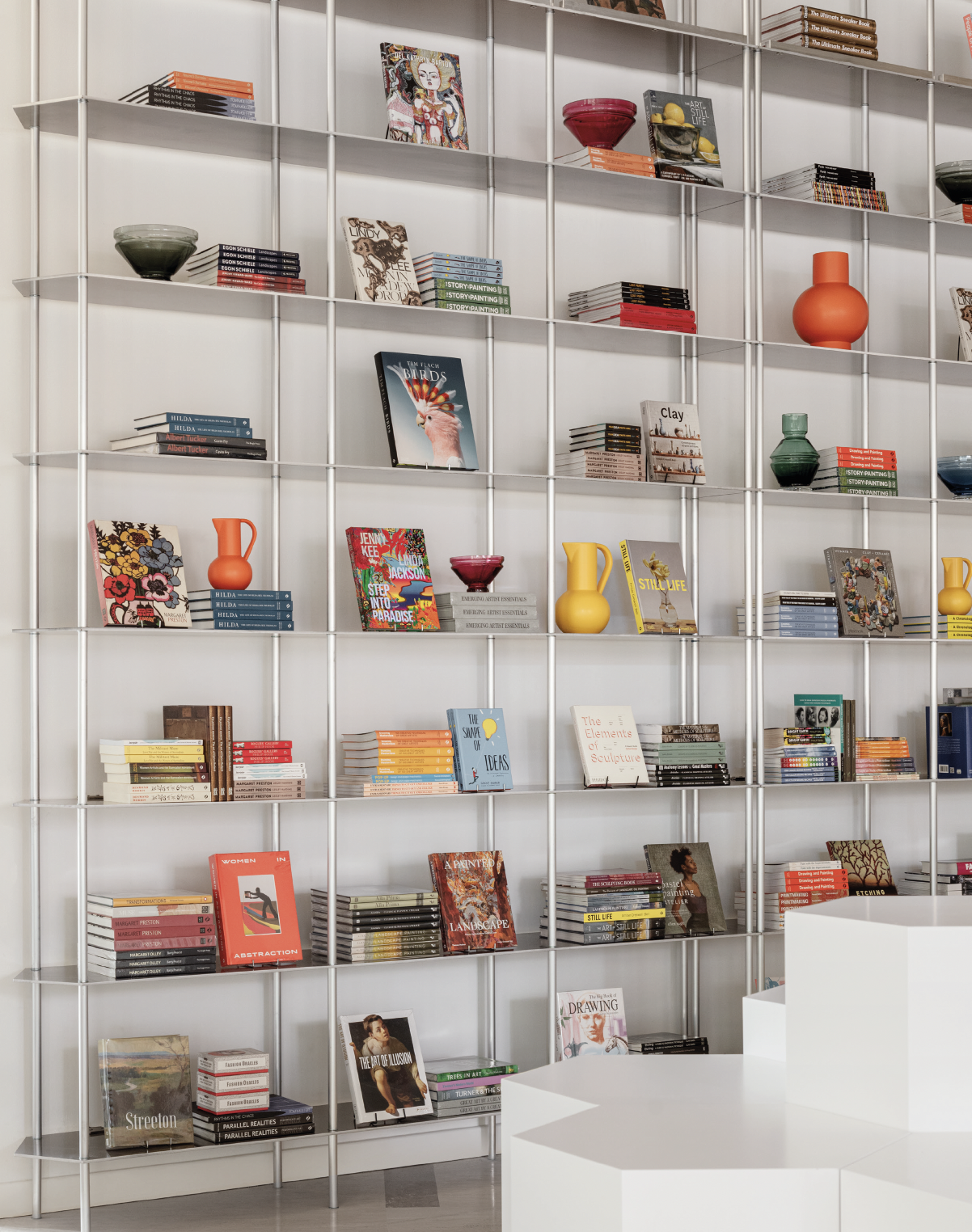
The desk appears like a precious object, befitting of its place among the riches of the state art collection – but in its materiality and its form it is also unfussy and durable. It is a confident, purposeful, unapologetic piece that commands the space and sets a new tone for the building.
In its position in the Perth Cultural Centre, the Art Gallery of Western Australia (AGWA) is a commanding monolith. Its brick form protrudes from the open walkway, at once carved out of and integrated into the city around it. AGWA sits right at the heart of Perth, adjacent to its central train station. Thousands of people pass by its front door every day. Yet, throughout the voluminous building there is a feeling of spaciousness and calm in the way sunlight filters in from the outside.
This is owing to the building’s highly rational design, a product of Polishborn Public Works Department architect Charles Sierakowski’s adherence to Brutalism. The only exception to this feeling, until recently, was that experienced in the building’s foyer – that all-important threshold between outside and in – where a number of ill-considered layout changes carried out in the 1990s had obfuscated its original boldness and beauty.
Opened in 1979, AGWA’s main gallery is built from a pattern of tessellated triangles that form a cluster of rigid hexagonal segments. It is a legible building befitting its use. The foyer, however, espoused a lack of interest in its own built form, an impression that spoke of a larger problem: it felt like a place that had forgotten its purpose. Here, all the shortcomings and none of the joy and ambition of Western Australia’s primary artistic institution were laid bare.
Such was the physical and emotional space with which architect Nic Brunsdon was confronted when his eponymous firm was appointed the task of redesigning AGWA’s entrance. Under the leadership of then-guest artistic director and contemporary artist Ian Strange, and AGWA director Colin Walker, the gallery took advantage of the pandemic and its period of intermittent closures to reconsider the foyer space, concurrent with the rooftop and top floor renovations, for a grand reopening.
Strange’s modus operandi during his time at the gallery was to return the building to its original architectural intent. Brunsdon responded, and the result is an astutely refreshed, reorganised, confident foyer with an adaptable, modular design store.
Brunsdon’s work here, while transformational, is not radical. There is an inclination to use the word ‘overhaul’, but that feels too aggressive for what is more correctly a considered restoration of the building’s former, timeless glory. Guided by an original high-spec design pass by Strange and architect Craig Nener, Brunsdon kept within a simple palette informed by the existing building, using only concrete, brushed and polished metal and travertine.
The layout has also been reorganised according to original floorplans. The reception is repositioned to the left of entry, with its wall resurfaced in a concrete render to match the original concrete pillars that ground and delineate the space. Brunsdon has also restored an original square opening in the wall, bound by tubular polished steel beams, which leads through to a staff workspace, thus enabling staff to keep the new front desk clear and clean.
Indeed, this new front desk is the central element of Brunsdon’s work. An 8-metre-long, singlesheeted steel monolith, the desk is a statement feature as well as being highly functional, fitted with ample, concealed under-storage on the far side. It is set at universal height, with adjustable sculptural travertine objects atop that allow different users to bring items on the desk up to their own working height. This flips the standard accessibility paradigm, where the needs of people with disabilities are treated as anomalous rather than as the rightful minimum requirements to be met by any build.
The desk appears like a precious object, befitting of its place among the riches of the state art collection – but in its materiality and its form it is also unfussy and durable. It is a confident, purposeful, unapologetic piece that commands the space and sets a new tone for the building. It says: We know and embrace our purpose, we care about what we’re doing here and we invite everyone in.
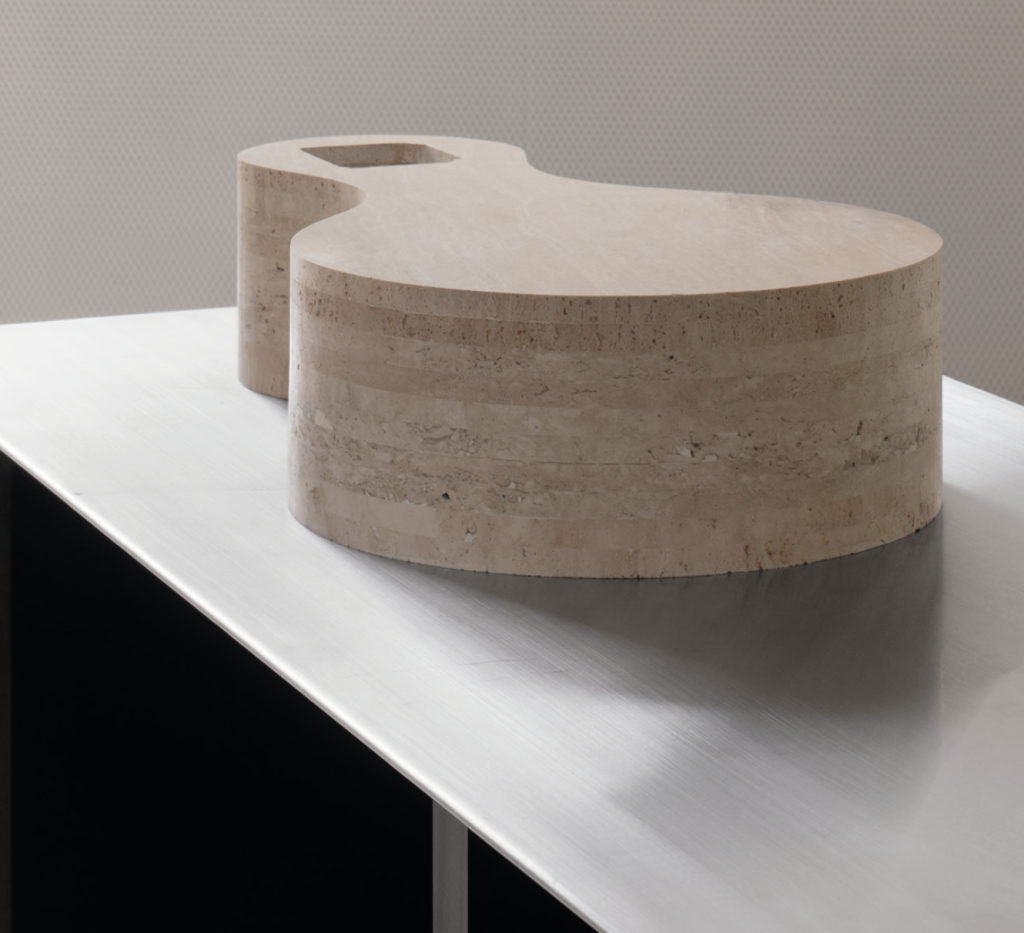
The design store is equally measured, featuring a second, smaller steel-sheeted workstation with another set of accompanying travertine objects for various uses, connecting the two spaces. An open, floor-to-ceiling storage system comprised of polished steel rods and brushed aluminium shelves runs along two sides of the hexagonal room to the right of the entry, while a series of plinths can be continually reorganised in the centre. It is smart, modern and suggestive of an ambition for the gallery to market equally considered products that speak back to the artistic nuance of its programming.
As with many civic buildings that proliferated in the Brutalist mid-20th century style, AGWA faces the challenge of fostering public appreciation for its monolithic form in order to instil a feeling that it is – far from brutal or obtuse – a place for everyone. It must articulate an adaptable capacity to reflect the variety of needs, interests, stories and identities of the population that collectively owns it.
The term Brutalism itself poses the first barrier – but while mistakenly perceived to describe a certain impenetrable or harsh quality, so-called Brutalist buildings are actually some of the most reflexive and responsive to human use, hence the style’s popularity for civic spaces. Brunsdon’s revival of the gallery’s entrance may go some way towards recalibrating human relationships with the building.
It is important this happens. We’re living through difficult times for art and artists in Australia – and that was true before the pandemic worsened things. Public art galleries are more important than ever, not just as cultural leaders and advocates but also as places for gathering, reflection, storytelling, pleasure and community. But the role of the public art gallery has always been a matter of debate, which makes it fundamental that these institutions themselves know their purpose, continually re-evaluate the extent to which they are fulfilling their purpose, and confidently reaffirm their purpose to the public through their spaces, their programming and their communication.
Moments of conscious change and renewal are opportunities for such re-evaluation and reaffirmation, as Brunsdon’s work at AGWA attests. He understood that the moment called for a level of restraint and guardianship of the building’s roots, and he found moments in which to elevate Sierakowski’s original intent, to glorious effect. In doing so, he has offered AGWA an opportunity to step confidently into its future – to embrace and pronounce not only the unique form and civic quality of its building, but also its role as a major cultural player in a state with enormous artistic and tourism potential. He has insightfully restored to the building a first impression of receptiveness and timelessness befitting AGWA’s distinct purpose and place in Western Australian life.
